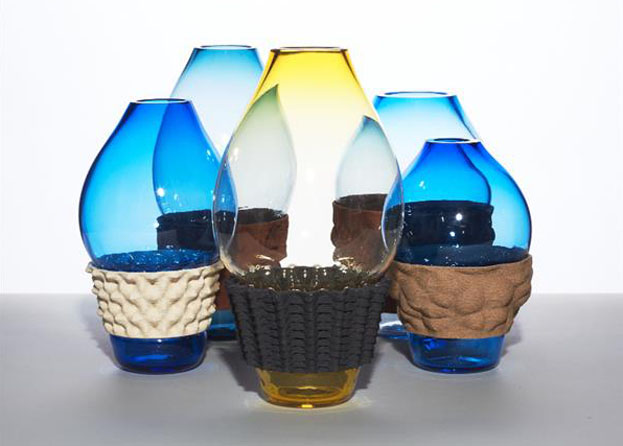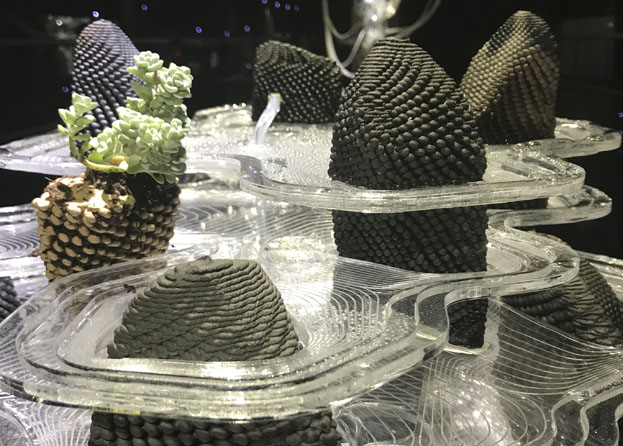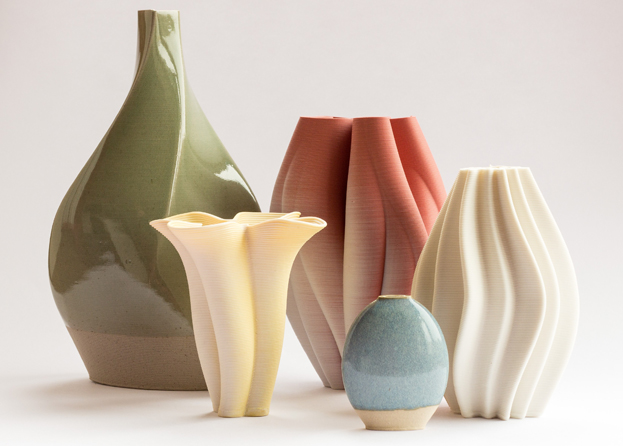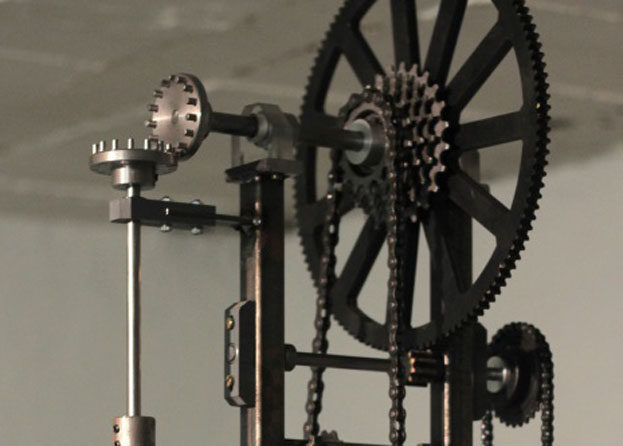3D printing technology has been finding its way into the hands of more and more artists recently, so it’s great to see more and more 3D printed works of art appearing. But as the Swedish Transaction Project, proves, it’s not just about making something new and fashionable. For as this artistic collaboration reveals, 3D printers can also be used to overcome traditional craft problem.
For the Transaction Project, is a collaboration between ceramicist Jonathan Keep, artist researcher Charles Stern and design studio Unfold, is essentially using 3D printing technology to finally combine ceramics with glassworks. While you might think ‘what’s the big deal about that’, the project’s collaborators tell 3ders.org that these two traditional crafts are notoriously difficult to combine. ‘Few works successfully combine these materials in a hot state because clay and glass possess different rates of contraction and expansion,’ they explain. ‘Charles Stern has initiated an investigation into this problem and with the help of experts including Jonathan keep and Unfold, has identified a working method that uses ceramic 3D printers and traditional glassblowing.’



At the core of the Transaction Project is thus a technological innovation: the combination of 3D printed moulds (made from ceramic) and blown glass. ‘This is significant for artistic practice and material science because it opens up a new language of form and offers an inexpensive, non-patented method to explore these two ‘incompatible’ materials,’ they tell us. And this wasn’t easy to achieve either, but is rather the result of a two year research project. ‘Through a long period of material testing in collaboration with many different actors, a process has finally emerged which addresses the compatibility issues between clay and glass,’ they say. Research and development was done at The Studio at Corning Museum of Glass, Konstfack University College of Arts Crafts and Design and The Glass Factory in Sweden.

Eventually, they developed a very efficient process that stays true to principles of handmade crafts, but combined with the benefits of quick digital manufacturing. Ceramic structures are essentially designed in 3D modelling software and subsequently 3D printed before being used as containers for glassblowing, and the speed and design freedom this has brought to the project was very well received.

3D printed ceramic containers.
‘The Transaction project makes use of 3D printing’s capacity to iterate swiftly; designs that are 3D printed in clay can be changed and produced to suit the conditions at hand; traditional methods of hand building or slip casting being more time consuming and expensive,’ they say. They are also very positive about the technology’s ability for design and production to be easy shared and distributed. ‘The use of cad files and transportable machinery means that ownership of the process can be devolved to allow more people to become stakeholders,’ they say. ‘This entails a wide conception of the designers role where the chief responsibility is to create a network or system which enables other makers.’


Glass blown into the ceramic containers.
The team therefore believes that the incorporation of 3D printing technology into the production process has the ability to keep traditional concepts of a craft – such as person to person teaching and a strong emphasis on reputation – alive by expanding it digitally. ‘In this way the project will articulate a role for digital fabrication as a connecting force for small scale, bespoke manufacturing. The aim is to create a resource that supports studio owners in a challenging market.’ While an ambitious project, those principles are essentially already kept alive through the peer-to-peer sharing of stl files and design tutorials. Perhaps the very concept of craftsmanship is changing?











